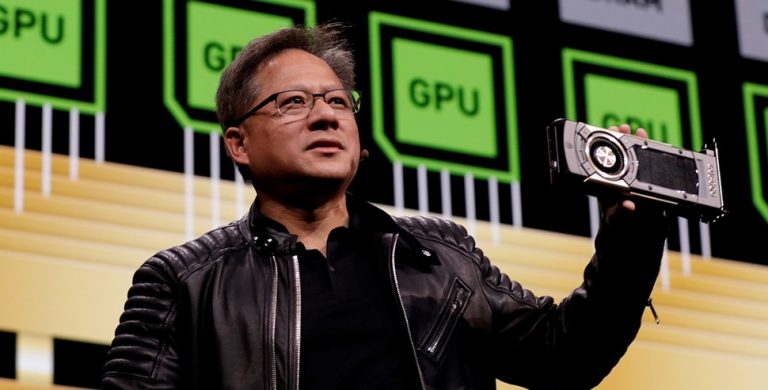
At a time when Washington is tightening the screws on China’s tech sector, Nvidia CEO Jensen Huang is striking a different tone — one that suggests the race for AI dominance isn’t as lopsided as U.S. policy might hope.
Speaking to reporters Wednesday at a technology conference in the U.S. capital, Huang offered a stark reality check: China is not trailing the United States in artificial intelligence, at least not by much.
“We are very close,” Huang said. “Remember, this is a long-term, infinite race.”
Register for Tekedia Mini-MBA edition 17 (June 9 – Sept 6, 2025) today for early bird discounts. Do annual for access to Blucera.com.
Tekedia AI in Business Masterclass opens registrations.
Join Tekedia Capital Syndicate and co-invest in great global startups.
Register to become a better CEO or Director with Tekedia CEO & Director Program.
It was a moment of candor that clashed sharply with prevailing narratives in Washington, where policymakers are increasingly treating China’s AI ambitions as something to be thwarted rather than matched. For Huang, however, the threat isn’t just China’s growing capability — it’s the risk that the U.S. might hobble itself through overregulation and protectionism.
Huang, who has led Nvidia through its meteoric rise as the engine room of the AI revolution, didn’t mince words when he spoke of Huawei, the Chinese firm that has been a central target of U.S. sanctions.
“They’re incredible in computing and network technology,” Huang said. “They have made enormous progress in the last several years.”
Huawei, though largely cut off from American tech due to a trade blacklist, has reportedly been building its own AI chips for domestic customers — a move that speaks to Beijing’s push for self-reliance in strategic technologies. And while the U.S. has sought to curb those ambitions through export controls, Nvidia’s own experience shows the limits of that approach.
Earlier this month, the Trump administration imposed new restrictions on Nvidia’s H20 chips, a China-compliant version of its Hopper architecture, barring shipments without a license. That decision, Nvidia said, will cost the company an estimated $5.5 billion in revenue. The irony? The H20 was designed precisely to comply with prior U.S. curbs, underscoring how rapidly Washington is shifting the goalposts.
For Huang, the fallout highlights a deeper risk, not just to Nvidia, but to America’s tech leadership itself.
“This is an industry that we will have to compete for,” he said. “We should focus on making U.S. companies more competitive, not just limiting others.”
Nvidia is trying to do just that. The company recently announced plans to invest $500 billion in AI infrastructure in the U.S. over the next five years, part of a broader push to onshore manufacturing and strengthen its domestic footprint. Huang confirmed Wednesday that Nvidia intends to build its AI devices in the U.S., with Foxconn set to assemble AI servers near Houston.
“With willpower and the resources of our country, I’m certain we can manufacture onshore,” he said.
President Trump, speaking the same day, applauded Nvidia’s domestic push and referred to Huang as “my friend Jensen” — a sign that despite current regulatory hurdles, the company still commands political favor in Washington’s shifting sands.
But Wall Street remains wary. Nvidia’s stock has dropped more than 20% this year, erasing part of the staggering gains it posted in 2024, when demand for AI chips seemed insatiable. The stock fell nearly 3% on Wednesday, reflecting investor anxiety over tighter export rules, global market instability, and growing competition abroad — not just from AMD and Intel, but from homegrown Chinese challengers like Huawei.
As China races to replicate or leapfrog technologies it can no longer easily import, the landscape is beginning to fracture. The world is inching toward two AI ecosystems: one rooted in Silicon Valley, the other in Shenzhen. In such a world, Huang’s warning that this is an “infinite race” seems less like a metaphor, and more like the defining reality of a new tech Cold War.
Against this backdrop, Nvidia’s challenge now is to stay at the forefront of that race, without being tripped by the very country it calls home.



